Wildflowers of the Adirondacks:
White Turtlehead (Chelone glabra)
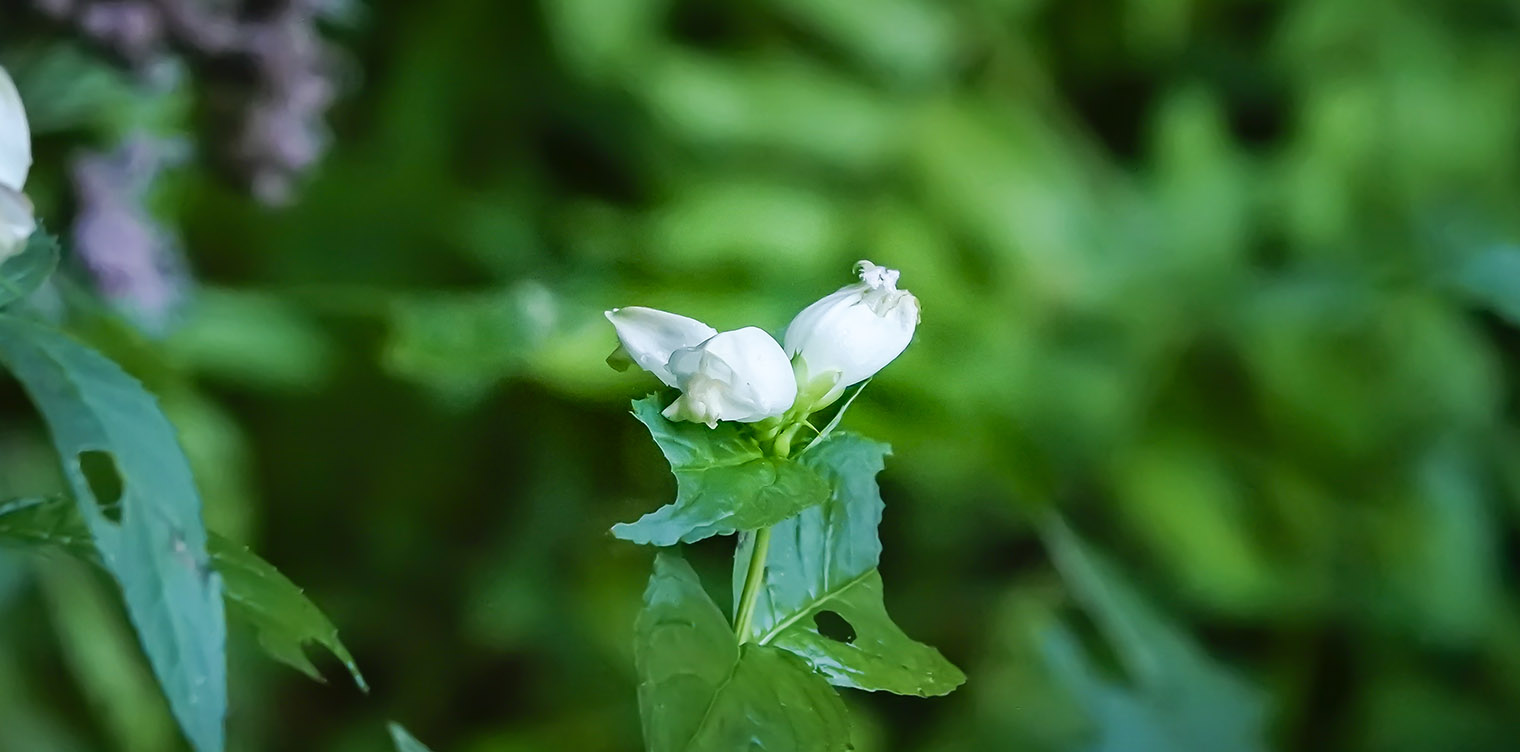
White Turtlehead (Chelone glabra L.) produces white or pinkish white flowers in late summer and grows in wetlands and other poorly drained sites in the Adirondack Mountains of upstate New York.
White Turtlehead was once considered to be a member of the Figwort Family; it has since been reassigned (based on DNA studies) to the Plantain Family (Plantaginaceae). White Turtlehead is the only member of the Chelone genus which is listed as present in New York State.
- The genus name (Chelone) is Greek for "turtle." The name derives from the fact that the flower, when viewed from the side, is said to resemble the head of a turtle or snake.
- The species name (glabra) is Latin for smooth – a reference to the fact that there is no hair on the leaves or stem.
- The author name "L." refers to Carl Linnaeus, the Swedish botanist who developed the binomial nomenclature of modern taxonomy.
This plant's nonscientific name – White Turtlehead – is a reference to the shape of its white flowers. Other nonscientific names include Balmony, Shellflower, Snakehead, Snakemouth, Turtlebloom, Bitterweed, Fishhead, and Fishmouth.
Identification of White Turtlehead
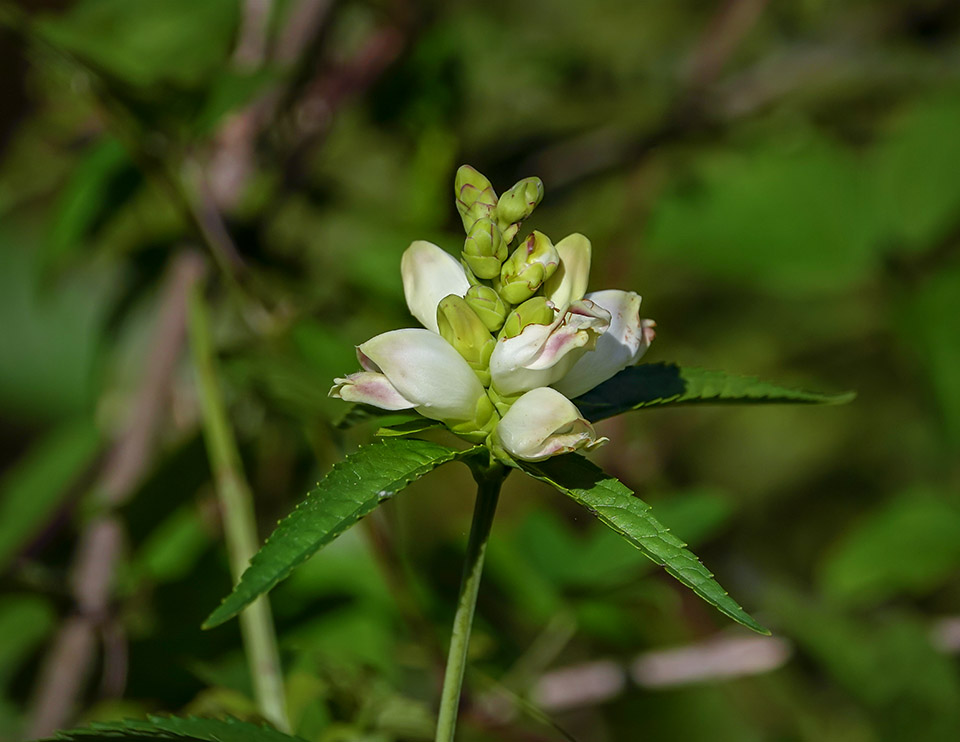
White Turtlehead is an erect, perennial Perennial: An herbaceous plant that lives for more than two growing seasons. Perennial plants grow and bloom over spring and summer, die back every fall and winter, and then return in the spring from their rootstock. plant that grows one to three feet tall. The central stem is glabrous Glabrous: The surface of a stem or leaf that is smooth and hairless., meaning that it is smooth, rather than hairy or bristly. The plant is usually unbranched or with upper branches.
The leaves of White Turtlehead are simple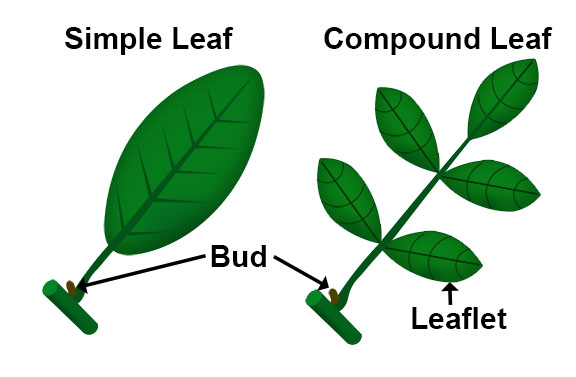 Simple Leaf: A leaf with a single undivided blade, as opposed to a compound leaf, which is one that is divided to the midrib, with distinct, expanded portions called leaflets. (not separated into leaflets).
Simple Leaf: A leaf with a single undivided blade, as opposed to a compound leaf, which is one that is divided to the midrib, with distinct, expanded portions called leaflets. (not separated into leaflets).
- The leaves are arranged in an
opposite
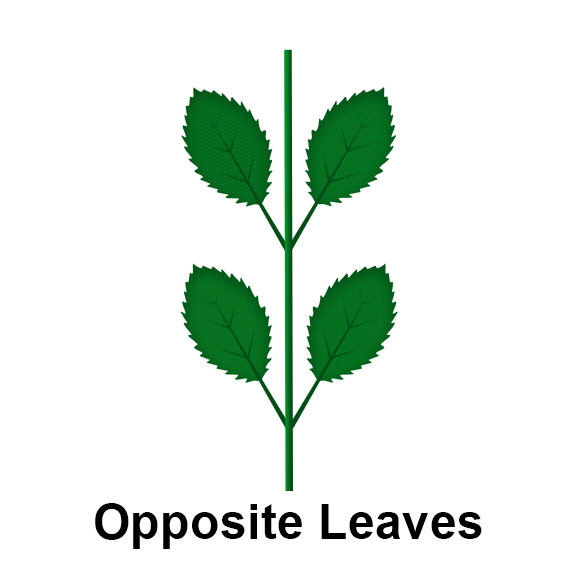 Opposite Leaves: Leaves occurring in pairs at a node, with one leaf on either side of the stem. fashion, meaning that there are two leaves per node along the stem.
Opposite Leaves: Leaves occurring in pairs at a node, with one leaf on either side of the stem. fashion, meaning that there are two leaves per node along the stem.
- The leaves, which are three to six inches long, are narrow, lance-shaped
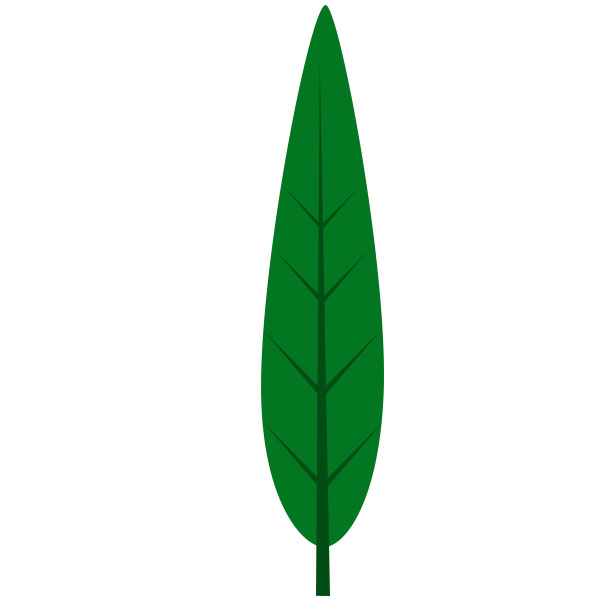 Lanceolate: A leaf shaped like a lance head, tapering to a point at each end., and sharply toothed
Lanceolate: A leaf shaped like a lance head, tapering to a point at each end., and sharply toothed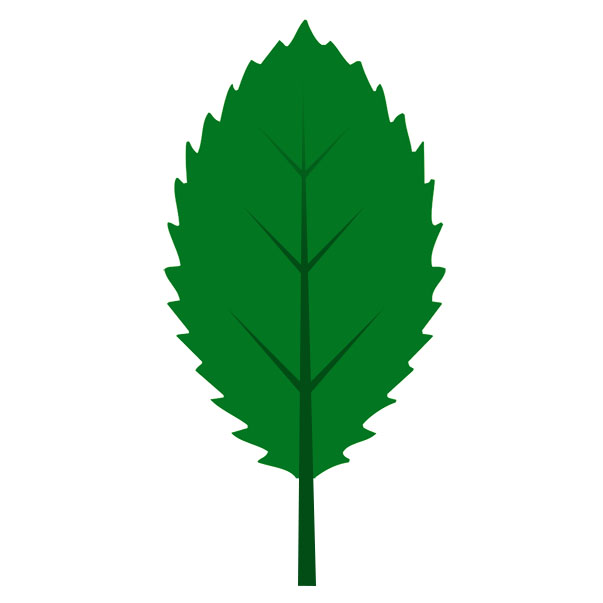 Toothed: Leaves which have a saw-toothed edge..
Toothed: Leaves which have a saw-toothed edge..
- The leaf stalks (petioles
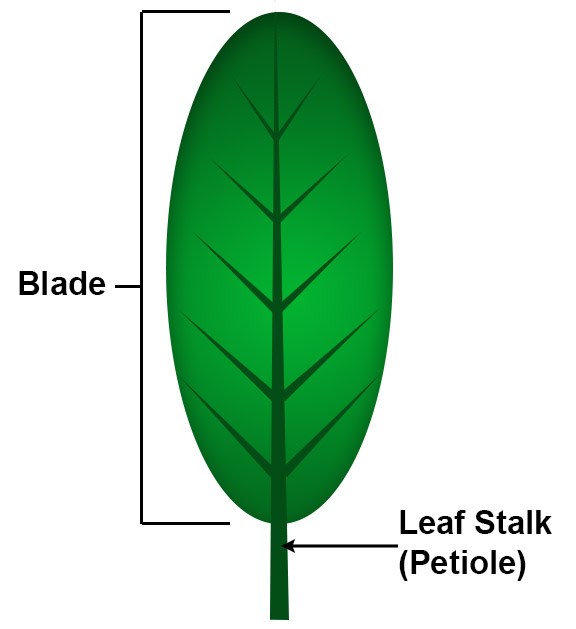 Petiole: The stalk that joins a leaf to a stem.) are less than ¼" in length or absent entirely, with the leaves appearing to be growing directly out of the stem.
Petiole: The stalk that joins a leaf to a stem.) are less than ¼" in length or absent entirely, with the leaves appearing to be growing directly out of the stem. - The leaves are widely spaced along the stem.
White Turtlehead flowers grow in dense spikes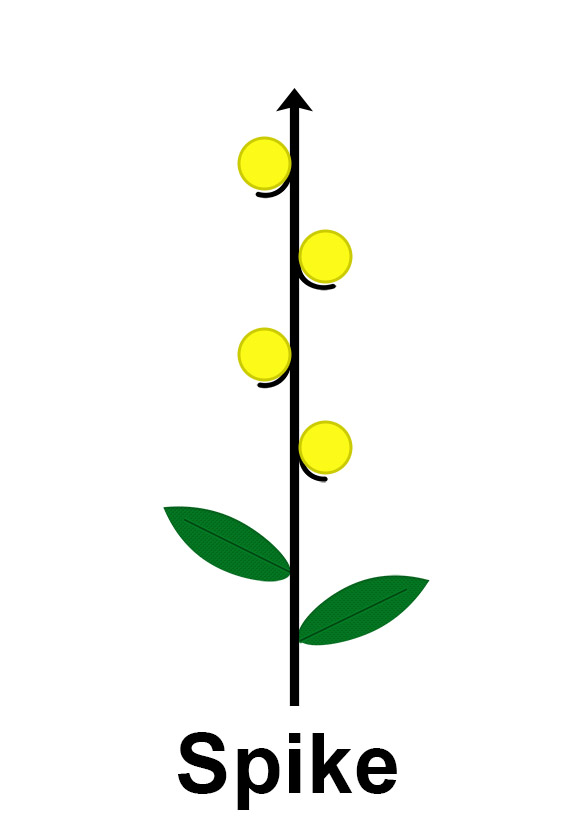 Spike: An unbranched stalk of flowers. Each flower or flowerhead is attached directly to the central stalk. at the top of the main stem.
Spike: An unbranched stalk of flowers. Each flower or flowerhead is attached directly to the central stalk. at the top of the main stem.
- The spike is about three to six inches in length. The flower buds do not open all at the same time. Rather, they bloom at intervals, beginning with the bottom blossoms.
- Each individual flower is about 1¼" long. The flowers have a two-lobed, hood-like upper lip. The upper lip, which functions as a protective hood, arches over the lower lip, giving the flower the shape of a turtle's head. The lower lip, which is used as a landing pad for visiting insects, has three lobes; the middle lobe is hairy.
- The flowers are white or white, tinged with light pink or pale purple.
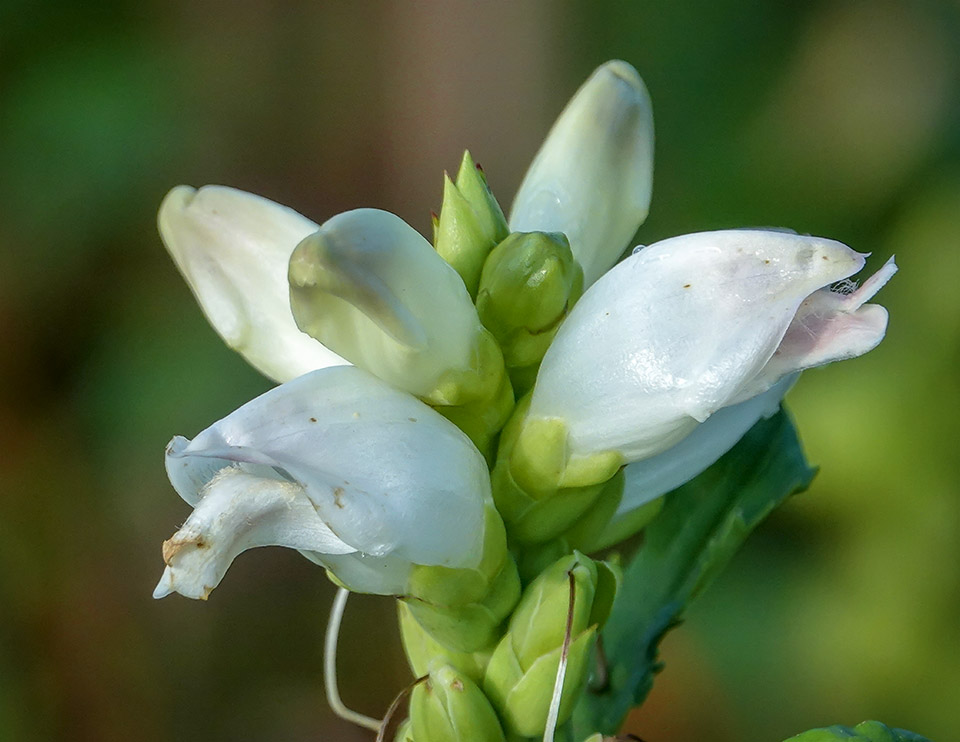
The bloom season for the White Turtleheads throughout its range is from July to September. In the northern US and Canada, the plant flowers chiefly in August. In the Adirondack Park, White Turtleheads are usually in flower in August until early fall. Most observations of this species in flower on iNaturalist are from August and early September, with a few sightings in very late July.
Late summer/early fall flowers are followed by fruit in October. Fertile flowers produce an oval seed capsule. The capsule contains several flat, brown seeds with wide wings to aid in wind dispersal.
White Turtlehead can be distinguished from the similar Pink Turtlehead (Chelone lyonii) by the color of the flowers and the length of the petioles Petiole: The stalk that joins a leaf to a stem. (leaf stalks). Pink Turtlehead (identified as Red Turtlehead in some sources) grows in the southern United States. However, it has been introduced locally in the northern states; and there are a number of Adirondack Park observations on iNaturalist. The flowers of Pink Turtlehead are a much deeper pink or red-purple throughout, in contrast to the White Turtlehead's white or pinkish blooms. In addition, the Pink Turtlehead has broader leaves and much longer petioles (leaf stalks), in contrast to the very short or ill-defined petioles of the White Turtlehead.
Petiole: The stalk that joins a leaf to a stem. (leaf stalks). Pink Turtlehead (identified as Red Turtlehead in some sources) grows in the southern United States. However, it has been introduced locally in the northern states; and there are a number of Adirondack Park observations on iNaturalist. The flowers of Pink Turtlehead are a much deeper pink or red-purple throughout, in contrast to the White Turtlehead's white or pinkish blooms. In addition, the Pink Turtlehead has broader leaves and much longer petioles (leaf stalks), in contrast to the very short or ill-defined petioles of the White Turtlehead.
Uses of White Turtlehead
White Turtlehead, which is said to be very bitter, appears to have no edible uses. However, the plant, when harvested in flower and dried for later use, has a number of uses in natural medicine. A tonic derived from this plant is said to be beneficial for indigestion. It has also been used as an anti-depressant and an aid in the treatment of gallbladder problems and diseases of the liver. These claims do not appear to have been investigated scientifically.
Native Americans used this plant for a variety of ailments. The Cherokee used an infusion of blooms for wounds, as a laxative, and to treat fevers; they also used it as a dietary aid to increase the appetite. The Iroquois used a decoction of roots as a liver aid. Other groups used the plant to prevent pregnancy. The green, mashed plant juice was also applied to skin sores.
Wildlife Value of White Turtlehead
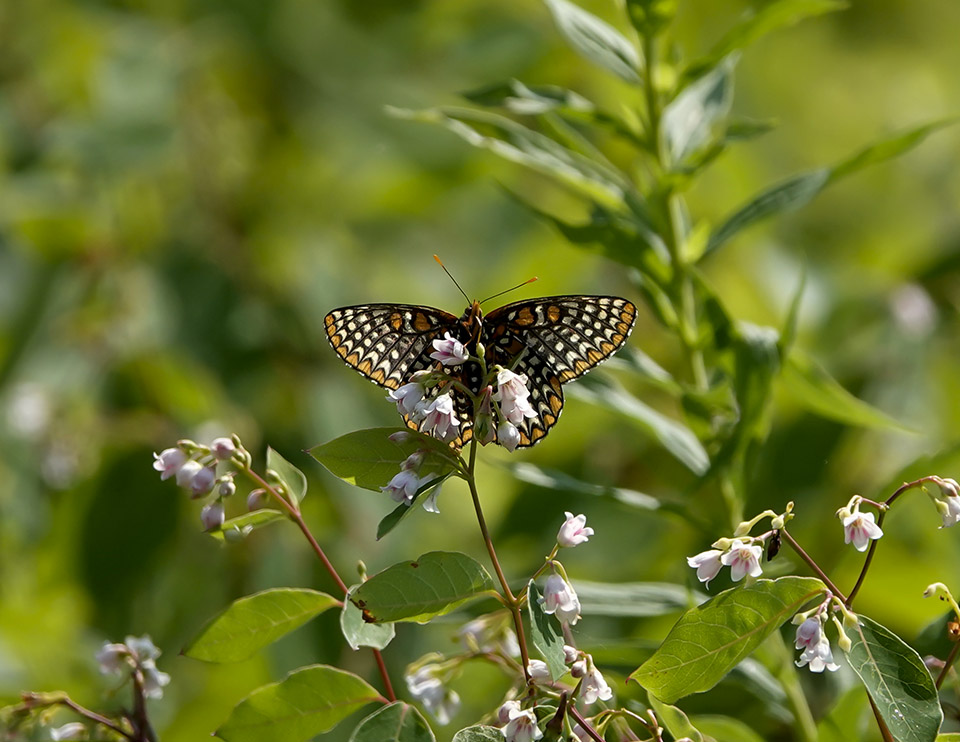
White Turtlehead has moderate value to wildlife, particularly insects. The nectar is consumed by bumblebees, which are large enough to force open the tops of the flower. Bombus impatiens and Bombus vagans are reported to be the most common visitors.
White Turtlehead is also the primary host plant and larval food source for the Baltimore Checkerspot butterfly. When Turtlehead is not available, females will use the introduced species English Plantain (Plantago lanceolate). Baltimore Checkerspots lay their eggs (in groups of 100-700) on the leaves in early summer. When the eggs hatch in three weeks time, the larvae feed communally in a silken nest until early August, then remain quiescent until October, when they descend to the ground and construct hibernating webs of leaves and other debris. After overwintering, they begin feeding again in the spring and pupate in May, often switching to non-host plants if they run out of Turtlehead.
Other insects that feed on White Turtlehead include larvae of the flea beetle Dialolia chelones and larvae from several species of sawfly. Sawfly larvae feed on the leaf tissue, but generally leave the midrib. In addition, Turtlehead Borer Moths feed on the stems.
White Turtlehead's value for mammals appears to be more limited. Sources conflict on its use as a browse by White-tailed Deer. Although one source claims that the foliage is bitter and usually avoided by deer and other mammalian herbivores, other studies state that it is a preferred browse species for White-tailed Deer in many riparian sites, often intensively browsed by deer.
Distribution of White Turtlehead
White Turtlehead is found throughout the eastern half of the United States, except for Florida and Louisiana. The plant also grows in the southeastern provinces of Canada, including Manitoba, Ontario, Quebec, and Newfoundland.
In New York State, White Turtlehead has been documented in almost all counties in the eastern half of the state. including all counties within the Adirondack Park Blue Line. The species has been listed as Exploitably Vulnerable in New York State.
Habitat of White Turtlehead
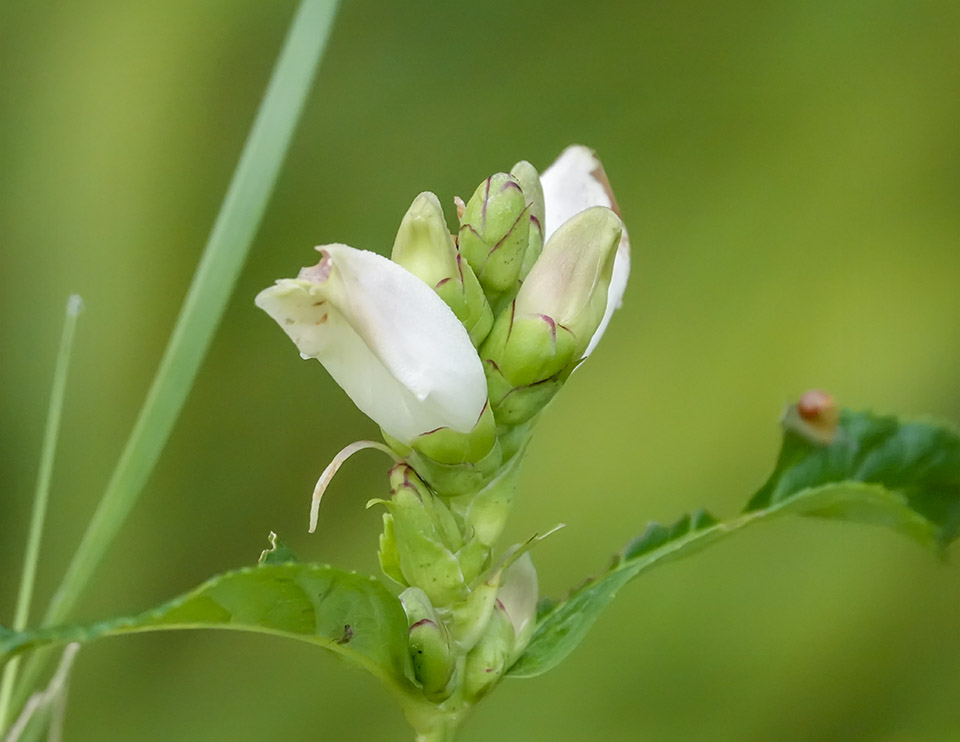
White Turtlehead is classified as an obligate wetland plant, meaning that it almost always occurs in wetlands. Habitats include swamps, marshes, rich fens, ditches, wet thickets, wet meadows, and the wet shores of rivers, streams, and lakes.
In New York State, White Turtlehead is usually found in poorly drained sites, mostly in full sun or partial shade. White Turtlehead is found in several wetland ecological communities in the Adirondack Park, including Rich Sloping Fen and Shallow Emergent Marsh. Look for White Turtlehead growing in wetland areas near Spotted Touch-me-not (Impatiens capensis), Spotted Joe Pye Weed (Eutrochium maculatum), Tall Meadow Rue (Thalictrum pubescens), and Cinnamon Fern (Osmunda cinnamomea).
Among the trails covered here, White Turtlehead can be found in wetland areas along the Black Pond Trail at the Paul Smith's College VIC, the Sucker Brook Trail at the Adirondack Interpretive Center, along the Ausable River on the Jackrabbit Trail at River Road, at the Cemetery Road Wetlands, and in wetland areas near the beaver pond on Hulls Falls Road.
References
Michael Kudish. Adirondack Upland Flora: An Ecological Perspective (The Chauncy Press, 1992), p. 184.
New York Flora Association. New York Flora Atlas. White Turtlehead. Chelone glabra L. Retrieved 7 October 2019.
Integrated Taxonomic Information System. Chelone glabra L. Retrieved 7 October 2019.
United States Department of Agriculture. The Plants Database. Chelone glabra L. White Turtlehead. Retrieved 7 October 2019.
United States Department of Agriculture. Forest Service. Plant of the Week. Turtlehead. Chelone glabra. Retrieved 7 October 2019.
New York State. Department of Environmental Conservation. New York Natural Heritage Program. Ecological Communities of New York State. Second Edition (March 2014), pp. 48-49, 57-58. Retrieved 17 October 2015.
New York Natural Heritage Program. 2019. Online Conservation Guide for Rich Sloping Fen. Retrieved 7 October 2019.
New York Natural Heritage Program. 2019. Online Conservation Guide for Shallow Emergent Marsh. Retrieved 7 October 2019.
New York State. Adirondack Park Agency. Preliminary List of Species Native Within the Adirondack Park Listed Alphabetically by Scientific Name and Sorted by Habit. Volume 1. Updated 10.23.2006, p. 18. Retrieved 26 January 2017.
Connecticut Botanical Society. Turtlehead. Chelone glabra L . Retrieved 8 October 2019.
University of Wisconsin. Flora of Wisconsin. Chelone glabra L. Retrieved 8 October 2019.
Minnesota Wildflowers. Chelone glabra. White Turtlehead. Retrieved 8 October 2019.
Illinois Wildflowers. White Turtlehead. Chelone glabra linifolia. Retrieved 8 October 2019.
Eloise Butler Wildflower Garden. The Friends of the Wild Flower Garden. Turtlehead. Chelone glabra L . Retrieved 8 October 2019.
Lady Bird Johnson Wildflower Center. White Turtlehead. Chelone glabra L. Retrieved 8 October 2019.
iNaturalist. Adirondack Park Sightings. White Turtlehead. Chelone glabra. Retrieved 23 April 2021.
Anne McGrath. Wildflowers of the Adirondacks (EarthWords, 2000), p. 23, Plate 11.
Roger Tory Peterson and Margaret McKenny. A Field Guide to Wildflowers. Northeastern and North-central North America (Houghton Mifflin Company, 1968), pp. 58-59.
Doug Ladd. North Woods Wildflowers (Falcon Publishing, 2001), p. 226.
Lawrence Newcomb. Newcomb's Wildflower Guide (Little Brown and Company, 1977), pp. 94-95.
Meiyin Wu & Dennis Kalma. Wetland Plants of the Adirondacks: Herbaceous Plants and Aquatic Plants (Trafford Publishing, 2011). p. 35.
Donald D. Cox. A Naturalist's Guide to Wetland Plants. An Ecology for Eastern North America (Syracuse University Press, 2002), pp. 109-110, 130.
Janet Lyons and Sandra Jordon. Walking the Wetlands. A Hiker's Guide to Common Plants and Animals of Marshes, Bogs, and Swamps (John Wiley & Sons, Inc., 1989), pp. 80-81.
David M. Brandenburg. Field Guide to Wildflowers of North America (Sterling Publishing Company, Inc., 2010), p. 539.
John Kricher. A Field Guide to Eastern Forests. North America (Houghton Mifflin, 1998), pp. 61-65.
Timothy Coffey. The History and Folklore of North American Wildflowers (FactsOnFile, 1993), p. 214.
William Carey Grimm. The Illustrated Book of Wildflowers and Shrubs (Stackpole Books, 1993), pp. 242-243.
Wilbur H. Duncan and Marion B. Duncan. Wildflowers of the Eastern United States (The University of Georgia Press, 1999), p. 87, Plate 321.
John Eastman. The Book of Swamp and Bog: Trees, Shrubs, and Wildflowers of Eastern Freshwater Wetlands (Stackpole Books, 1995), p. 195.
Plants for a Future. Chelone glabra. Retrieved 7 October 2019.
Steven Foster and James A. Duke. A Field Guide to Medicinal Plants and Herbs of Eastern and Central North America. Second Edition. (Houghton Mifflin Harcourt, 2000), pp. 15-16.
University of Michigan. Native American Ethnobotany. A Database of Foods, Drugs, Dyes and Fibers of Native American Peoples, Derived from Plants. White Turtlehead. Chelone glabra L. Retrieved 8 October 2019.
University of Michigan. Native American Ethnobotany. A Database of Foods, Drugs, Dyes and Fibers of Native American Peoples, Derived from Plants. White Turtlehead. Chelone glabra L. Retrieved 8 October 2019.
Butterflies and Moths of North America. Baltimore Checkerspot. Euphydryas phaeton. Retrieved 8 October 2019.
Canadian Biodiversity Information Facility. Butterflies of Canada. Baltimore Checkerspot. Euphydryas phaeton. Retrieved 8 October 2019.
Iowa State University. BugGuide. Dibolia chelones. Retrieved 8 October 2019.
Iowa State University. BugGuide. Pink-patched Looper Moth. Eosphoropteryx thyatyroides. Retrieved 8 October 2019.
Iowa State University. BugGuide. Baltimore Checkerspot. Euphydryas phaeton. Retrieved 8 October 2019.
Iowa State University. BugGuide. Tenthredo grandis. Retrieved 9 October 2019.
Iowa State University. BugGuide. Turtlehead Borer Moth. Papaipema nepheleptena. Retrieved 9 October 2019.
Charles H. Peck. Plants of North Elba. (Bulletin of the New York State Museum, Volume 6, Number 28, June 1899), p. 116. Retrieved 22 February 2017.
Leif L. Richardson and Rebecca E. Irwin, "Pollination Ecology and Floral Visitor Spectrum of Turtlehead (Chelone Glabra L.; Plantaginaceae)," Journal of Pollination Ecology, 17(20), 2015, pp 132-144.
F. W. Pennell and E. T. Wherry, "The Genus Chelone of Eastern North America ," Bartonia, Number 10 (1927-1928), pp. 12-23. Retrieved 8 October 2019.
Nancy E. Stamp, "Effect of Defoliation by Checkerspot Caterpillars (Euphydryas phaeton) and Sawfly Larvae (Macrophya nigra and Tenthredo grandis) on their host plants (Chelone spp.)," Oecologia, Volume 63, Number 2 (1984), pp. 275-280. Retrieved 9 October 2019.
Charles E. Williams, Eric V. Mosbacher, and William J. Moriarity, "Use of turtlehead (Chelone glabra L.) and Other Herbaceous Plants to Assess Intensity of White-tailed Deer Browsing on Allegheny Plateau Riparian Forests, USA," Biological Conservation, Number 92 (2000), pp. 207-215. Retrieved 9 October 2019.
